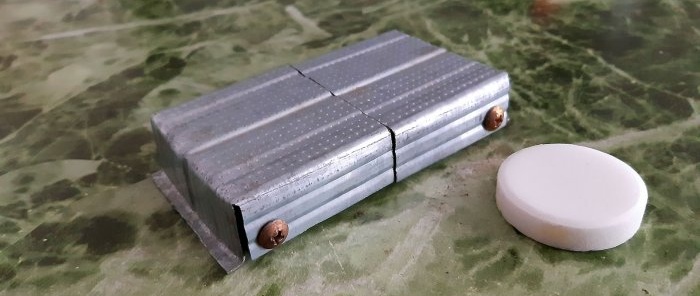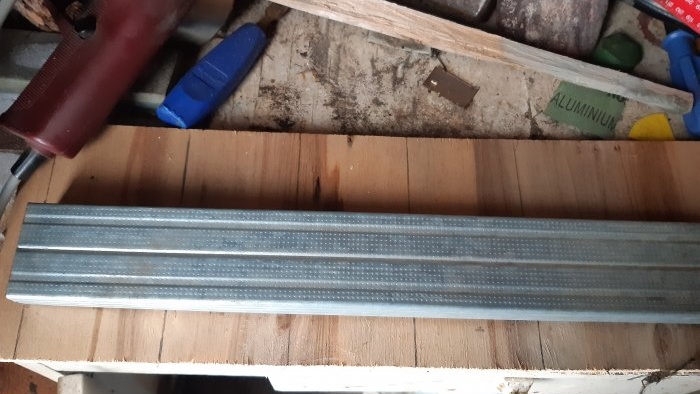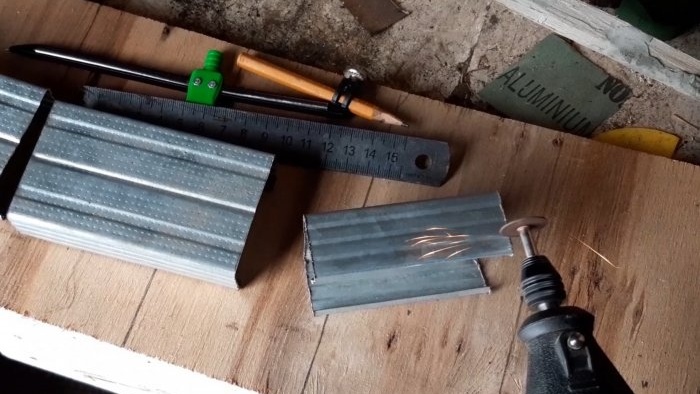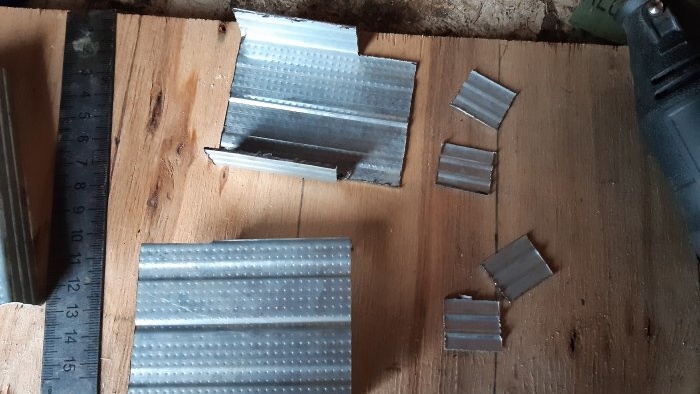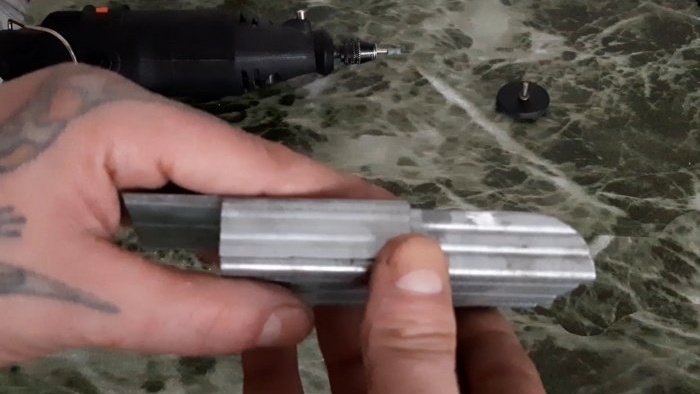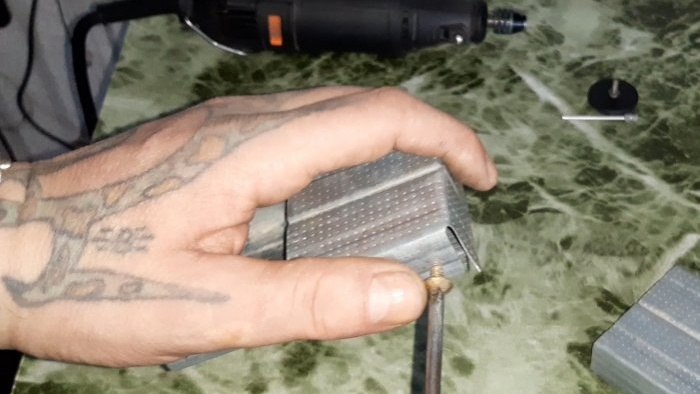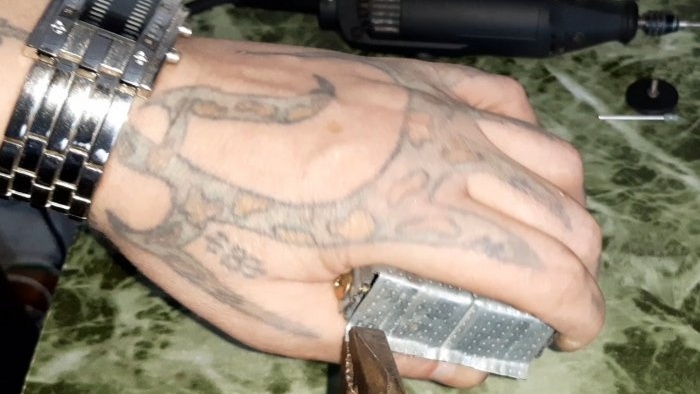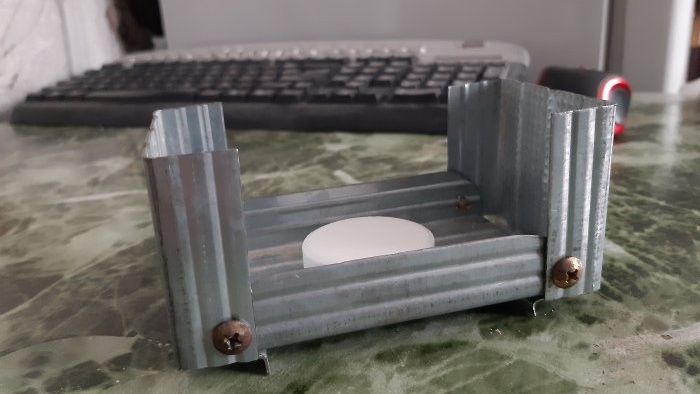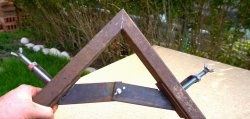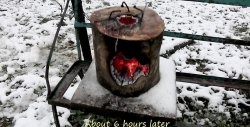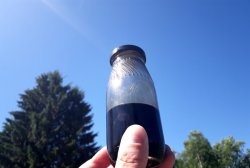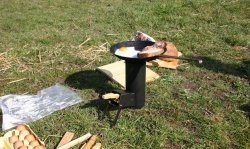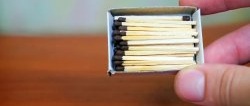After interior renovations or exterior cladding of the walls of a house, there is always a lot of useful trash left. In addition to fragments of old building material that are still suitable for use, there are still many pieces of new material remaining. The segments are such that it seems impossible to use them anymore. But if you think a little and spend half an hour on the Internet, you can find many options on how to make useful and necessary things from these leftovers. I have long been planning to purchase a pocket army stove that runs on dry alcohol (dry fuel tablets), which I am now going to make from the remains of a galvanized profile, from one of the online stores.
But, by a lucky coincidence, I came across a video on the Internet in which some guy assembled exactly the same thing literally on his knee, in ten minutes. With a minimum set of tools.
Will need
- 30 cm galvanized profile, 50 mm wide (can be cut into pieces).
- Ruler.
- A simple pencil.
- A drill or drill with a 2.5 mm drill and a cutting disc.
- Four screws, or bolts with nuts, for 2.5 mm holes.
- Pliers.
- Screwdriver.
Assembling a pocket stove
First, you need to separate three segments from the whole profile. One piece of 100 mm, and two pieces of 75 mm. Since my metal scissors were broken, I used a drill with a cutting disc to cut the galvanized steel. So, we separated.
Next, you need to remove the stiffening ribs from all three segments. That is, the edges are curved inside the profile. At both sides. At the side ends of such a profile there are pressed strips (also, a kind of stiffening ribs), and so the lowest strip will serve as a guide along which we will cut off the edge.
Now you need to cut off the edges of two short pieces of the profile, so that the last 2.5 cm of the profile are left completely without walls. Like this: Let's put aside the short sections for now and move on to the long section. There won’t be any special changes to it, just round the corners. Using something round, such as a coin or a lid, draw rounded corners and cut along the drawn mark. Like this:At this point, the most time-consuming part of the work is over. Now it is necessary to remove sharp burrs from all parts so as not to get cuts during further work.
After cleaning, you can try the parts on each other.
You should get two short profiles of 50 mm each with tails of 2.5 mm (the entire segment is 75 mm), and one hundred mm segment with rounded corners. If everything comes together smoothly, bend the tails of the short sections inward with pliers.
To make an end. We put everything back together and make marks for future holes. We drill holes.
Use a suitable screwdriver to screw the screws into the holes.
Now one more small point; The thickness of our profile is 20 mm, and we left the tails for the ends at 25 mm. After we bent the tails into the ends, we still had five millimeters left.This is not superfluous and not an incorrect calculation. Simply, with the help of pliers, we will turn these remaining millimeters into legs-stands, which will not allow the stove to lie entirely flat on the surface and give off excess heat to warm up the table or other surface on which the stove will work.
And now we have a military pocket stove, no worse than one assembled in a specially equipped factory. Of course, such a thing is not very expensive, but using something made with your own hands is much more pleasant.
In addition, the savings of two or three hundred will never be superfluous... By adjusting the gap between the sliding halves, you can put any dishware on this stove - from a small camping mug to a medium-sized saucepan or kettle.
Such a stove, as I mentioned above, will operate on dry fuel pellets. One tablet is enough to boil water in a metal mug with a volume of up to 250 ml. These tablets are sold in any hardware or hunting store. They cost pennies—a little more than matches. It is possible, in principle, to heat such a stove with wood chips, but due to their small size, which can be thrown into such a miniature product, they will quickly burn out there. You will have to constantly hang around the stove to keep the fire going. So the most optimal fuel is dry fuel (or, in extreme cases, a bowl of alcohol). In addition, it will not smoke your dishes or the stove itself.
